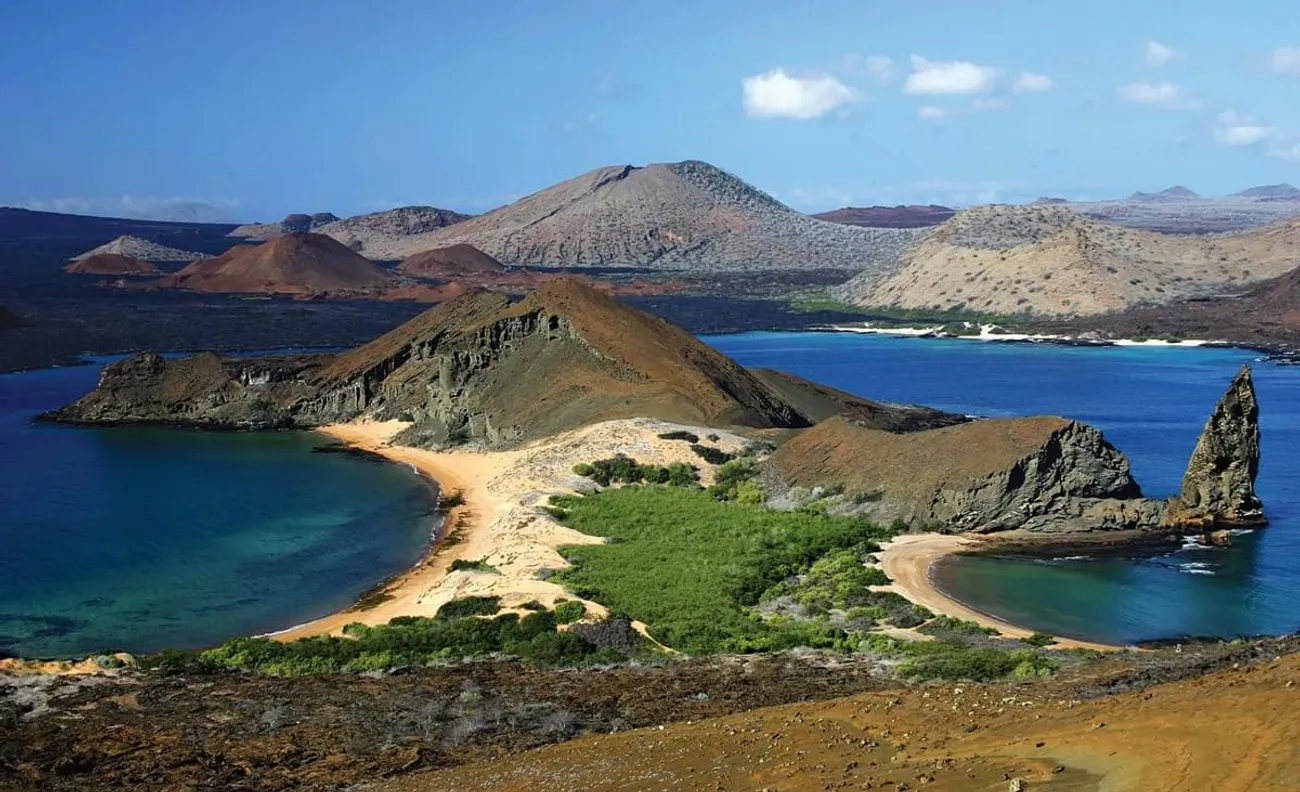ഗാലപാഗോസ്
ഗാലപാഗോസ് ദ്വീപുകൾ മറ്റെവിടെയും ഇല്ലാത്ത സ്ഥലമാണ്. ഇക്വഡോറിന്റെ തീരത്ത് നിന്ന് 620 മൈൽ അകലെ സ്ഥിതി ചെയ്യുന്ന ഈ അഗ്നിപർവ്വത ദ്വീപുകൾ അവിശ്വസനീയമായ വന്യജീവികളുടെ ആവാസ കേന്ദ്രമാണ്, അവയിൽ പലതും ഭൂമിയിൽ മറ്റെവിടെയും കാണുന്നില്ല. ഒരു വന്യജീവി പ്രേമി എന്ന നിലയിൽ, വർഷങ്ങളായി ഗാലപാഗോസ് സന്ദർശിക്കണമെന്ന് ഞാൻ സ്വപ്നം കണ്ടു, അങ്ങനെ അവസരം വന്നപ്പോൾ, അത് പിടിച്ചെടുക്കണമെന്ന് എനിക്കറിയാം.
ഗാലപാഗോസിന്റെ ചരിത്രവും അതിന്റെ വന്യജീവികളെപ്പോലെ ആകർഷകമാണ്. 1535-ൽ സ്പാനിഷ് പര്യവേഷകനായ ടോമാസ് ഡി ബെർലാംഗയാണ് ഈ ദ്വീപുകൾ കണ്ടെത്തിയത്, പെറുവിലേക്കുള്ള യാത്രാമധ്യേ ആകസ്മികമായി ഇടറിവീണു. നൂറ്റാണ്ടുകളായി, ദ്വീപുകൾ താരതമ്യേന ഒറ്റപ്പെട്ടു, തിമിംഗലങ്ങൾക്കും കടൽക്കൊള്ളക്കാർക്കും ഒരു വഴിയായി വർത്തിച്ചു, പക്ഷേ മനുഷ്യ നാഗരികത വലിയ തോതിൽ സ്പർശിച്ചിട്ടില്ല.
19-ആം നൂറ്റാണ്ടിലാണ് ഗാലപ്പഗോസ് ശാസ്ത്രീയ ശ്രദ്ധ ആകർഷിക്കാൻ തുടങ്ങിയത്. 1835-ൽ, ബ്രിട്ടീഷ് പ്രകൃതിശാസ്ത്രജ്ഞനായ ചാൾസ് ഡാർവിൻ എച്ച്എംഎസ് ബീഗിളിൽ ദ്വീപുകൾ സന്ദർശിച്ചു, അതുല്യമായ സസ്യജന്തുജാലങ്ങളെ നിരീക്ഷിച്ചു, പ്രകൃതിനിർദ്ധാരണത്തിലൂടെയുള്ള പരിണാമ സിദ്ധാന്തം രൂപപ്പെടുത്തി. ഇന്ന്, ഗാലപാഗോസ് പാരിസ്ഥിതിക, വന്യജീവി വിനോദസഞ്ചാരത്തിനുള്ള ലോകത്തിലെ പ്രധാന സ്ഥലങ്ങളിൽ ഒന്നായി കണക്കാക്കപ്പെടുന്നു, ഓരോ വർഷവും 200,000 സന്ദർശകർ.
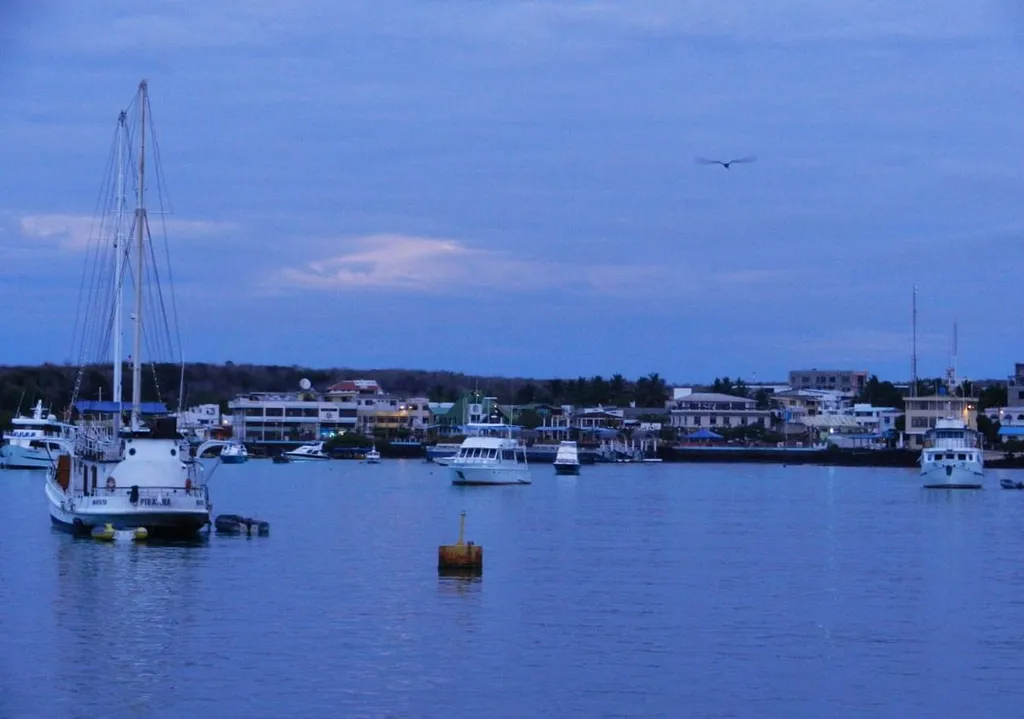
എന്റെ വിമാനം ബാൾട്ര ദ്വീപിൽ തൊടുമ്പോൾ, എന്റെ ഉള്ളിൽ ഒരു ആവേശവും കാത്തിരിപ്പും വളരുന്നതായി എനിക്ക് തോന്നി. ദ്വീപുകൾക്ക് ചുറ്റും ഒരാഴ്ച നീണ്ടുനിൽക്കുന്ന യാത്ര നടത്താൻ ഞാൻ ക്രമീകരിച്ചിരുന്നു, പര്യവേക്ഷണം ആരംഭിക്കാൻ എനിക്ക് കാത്തിരിക്കാനായില്ല. ദ്വീപസമൂഹത്തിലെ രണ്ടാമത്തെ വലിയ ദ്വീപും വിനോദസഞ്ചാരികളുടെ പ്രവർത്തന കേന്ദ്രവുമായ സാന്താക്രൂസ് ആയിരുന്നു എന്റെ ആദ്യ സ്റ്റോപ്പ്.
സാന്താക്രൂസിൽ ചാൾസ് ഡാർവിൻ റിസർച്ച് സ്റ്റേഷൻ സ്ഥിതിചെയ്യുന്നു, ഇത് ഗാലപ്പഗോസിന്റെ തനതായ ആവാസവ്യവസ്ഥയെക്കുറിച്ചുള്ള പഠനത്തിനും സംരക്ഷണത്തിനുമായി സമർപ്പിച്ചിരിക്കുന്ന ഒരു ശാസ്ത്രീയ സൗകര്യമാണ്. സ്റ്റേഷൻ സന്ദർശകർക്കായി തുറന്നിരിക്കുന്നു, അതിന്റെ പ്രദർശനങ്ങൾ പര്യവേക്ഷണം ചെയ്യാനും നടന്നുകൊണ്ടിരിക്കുന്ന ഗവേഷണ പ്രോജക്റ്റുകളെ കുറിച്ച് പഠിക്കാനും ഞാൻ മണിക്കൂറുകളോളം ചെലവഴിച്ചു. 100 വർഷത്തിലധികം ആയുസ്സുള്ളതും 600 പൗണ്ട് വരെ ഭാരവുമുള്ള പ്രശസ്തമായ ഗാലപാഗോസ് ആമകളെ കണ്ടതാണ് എന്റെ സന്ദർശനത്തിന്റെ പ്രധാന ആകർഷണങ്ങളിലൊന്ന്.
സാന്താക്രൂസ് വിട്ടതിനുശേഷം, എന്റെ ക്രൂയിസ് എന്നെ മറ്റ് നിരവധി ദ്വീപുകളിലേക്ക് കൊണ്ടുപോയി, ഓരോന്നിനും അതിന്റേതായ തനതായ വന്യജീവികളും പ്രകൃതിദൃശ്യങ്ങളും. പക്ഷിമൃഗാദികൾക്ക് പേരുകേട്ട ദ്വീപസമൂഹത്തിന്റെ വടക്കുകിഴക്കുള്ള ചെറിയ ദ്വീപായ ജെനോവേസയാണ് അവിസ്മരണീയമായ ഒന്ന്. ഇവിടെ, ഫ്രിഗേറ്റ് ബേഡ്സ്, നീലക്കാൽ ബൂബികൾ, ചുവന്ന കാലുള്ള ബൂബികൾ എന്നിവയെല്ലാം അവയുടെ സ്വാഭാവിക ആവാസവ്യവസ്ഥയിൽ ഞാൻ കണ്ടു. ഉയരം കൂടിയ പാറക്കെട്ടുകളും കൂർത്ത ലാവ രൂപങ്ങളുമുള്ള ലാൻഡ്സ്കേപ്പ് നഗ്നവും മറ്റൊരു ലോകവുമായിരുന്നു.
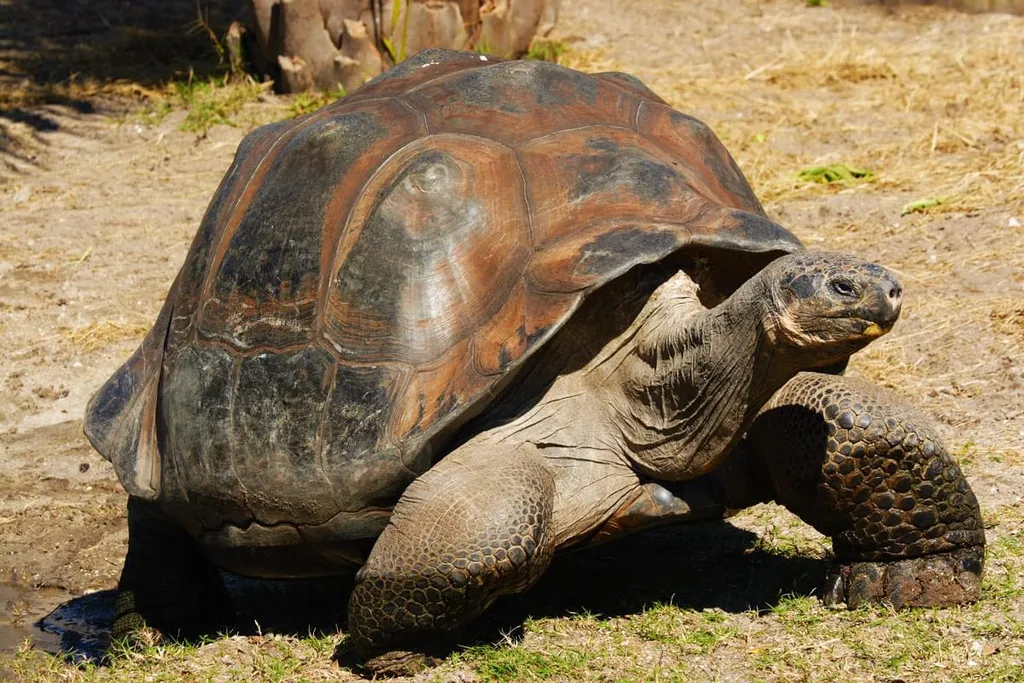
കൗതുകകരമായ മനുഷ്യചരിത്രമുള്ള ഒരു ചെറിയ ദ്വീപായ ഫ്ളോറിയാന സന്ദർശനമായിരുന്നു എന്റെ യാത്രയുടെ മറ്റൊരു പ്രത്യേകത. പത്തൊൻപതാം നൂറ്റാണ്ടിൽ, ഈ ദ്വീപ് ഒരു ചെറിയ കൂട്ടം കുടിയേറ്റക്കാരുടെ ആവാസ കേന്ദ്രമായിരുന്നു, അവർ കഠിനമായ ഭൂപ്രദേശത്ത് ജീവിക്കാൻ പാടുപെട്ടു. ഇന്ന്, ഈ ദ്വീപ് പോസ്റ്റ് ഓഫീസ് ബേ ഉൾപ്പെടെ നിരവധി ചരിത്ര സ്ഥലങ്ങളുടെ ആസ്ഥാനമാണ്, അവിടെ തിമിംഗലങ്ങൾ പ്രിയപ്പെട്ടവർക്ക് കപ്പൽ കടത്തിക്കൊണ്ടുപോകാൻ കത്തുകൾ നൽകാറുണ്ടായിരുന്നു. സന്ദർശകർക്ക് ഇപ്പോഴും കത്തുകൾ ബോക്സിൽ ഇടാം, അത് ഇപ്പോൾ ഇക്വഡോറിയൻ പോസ്റ്റ് ഓഫീസ് പരിപാലിക്കുന്നു.
എന്റെ യാത്രയിലുടനീളം, സംരക്ഷണത്തിനും സുസ്ഥിര വിനോദസഞ്ചാരത്തിനുമുള്ള ഗാലപ്പഗോസിന്റെ പ്രതിബദ്ധത എന്നെ ആകർഷിച്ചു. സന്ദർശകരുടെ എണ്ണത്തിലും അനുവദനീയമായ പ്രവർത്തന തരങ്ങളിലും കർശനമായ പരിമിതികളോടെ ദ്വീപുകൾ കനത്ത നിയന്ത്രണത്തിലാണ്. ഇത് ദുർബലമായ ആവാസവ്യവസ്ഥയെ സംരക്ഷിക്കാനും വന്യജീവികളെ മനുഷ്യന്റെ ശല്യത്തിൽ നിന്ന് സംരക്ഷിക്കാനും സഹായിച്ചു.
എന്റെ യാത്രയുടെ അവസാനം ബാൾട്രയിലേക്ക് മടങ്ങുമ്പോൾ, ഗാലപ്പഗോസിൽ എനിക്കുണ്ടായ അവിശ്വസനീയമായ അനുഭവത്തിൽ എനിക്ക് ഭയവും നന്ദിയും തോന്നാതിരിക്കാൻ കഴിഞ്ഞില്ല. ഉയർന്നുനിൽക്കുന്ന ആമകൾ മുതൽ കളിയായ കടൽ സിംഹങ്ങൾ വരെ അതിശയിപ്പിക്കുന്ന ഭൂപ്രകൃതികൾ വരെ, ദ്വീപുകളുടെ എല്ലാ വശങ്ങളും അവിസ്മരണീയമായിരുന്നു. പക്ഷേ, ഒരുപക്ഷേ ഏറ്റവും പ്രധാനമായി, ഭൂമിയിലെ ജീവന്റെ അവിശ്വസനീയമായ വൈവിധ്യത്തെക്കുറിച്ചും ഭാവി തലമുറകൾക്കായി അത് സംരക്ഷിക്കേണ്ടതിന്റെ പ്രാധാന്യത്തെക്കുറിച്ചും ഗാലപ്പഗോസ് എന്നെ ഓർമ്മിപ്പിച്ചു.
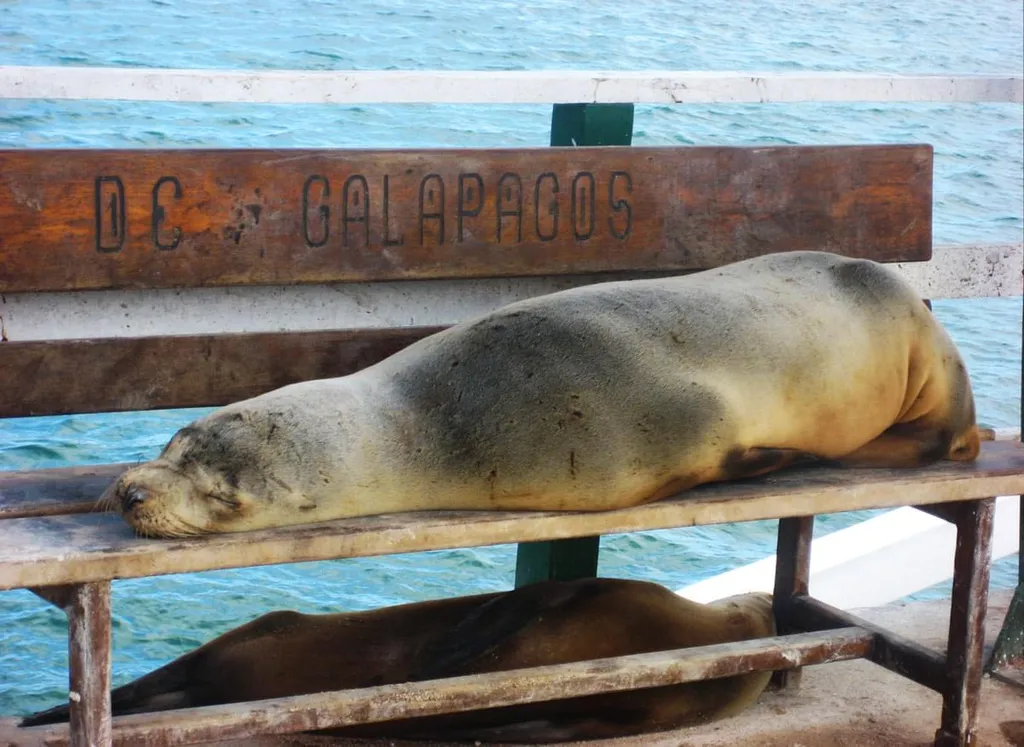
ഉപസംഹാരമായി, ഗാലപാഗോസ് ദ്വീപുകൾ ഏതൊരു വന്യജീവി പ്രേമിയോ പാരിസ്ഥിതിക പ്രേമിയോ തീർച്ചയായും കണ്ടിരിക്കേണ്ട സ്ഥലമാണ്. അപൂർവവും തദ്ദേശീയവുമായ ജീവജാലങ്ങളെ അടുത്തു കാണാനും പരിസ്ഥിതി വ്യവസ്ഥകൾക്കുള്ളിൽ നിലനിൽക്കുന്ന സങ്കീർണ്ണമായ ബന്ധങ്ങളെ കുറിച്ച് പഠിക്കാനുമുള്ള അവസരങ്ങളോടെ പ്രകൃതി ലോകത്തേക്ക് ദ്വീപുകൾ ഒരു അതുല്യമായ ജാലകം വാഗ്ദാനം ചെയ്യുന്നു. എന്നാൽ പാരിസ്ഥിതിക അത്ഭുതങ്ങൾക്കപ്പുറം, ഗാലപാഗോസിന് നൂറ്റാണ്ടുകൾ പഴക്കമുള്ള പാരമ്പര്യങ്ങളുള്ള സമ്പന്നമായ മനുഷ്യ ചരിത്രവും സംസ്കാരവുമുണ്ട്.
ഇന്ന്, ഗാലപാഗോസ് നിരവധി വെല്ലുവിളികൾ അഭിമുഖീകരിക്കുന്നു, അമിതമായ മത്സ്യബന്ധനം മുതൽ അധിനിവേശ ജീവിവർഗങ്ങൾ, കാലാവസ്ഥാ വ്യതിയാനം വരെ. എന്നാൽ സമർപ്പിതരായ ശാസ്ത്രജ്ഞർ, സംരക്ഷണവാദികൾ, പ്രാദേശിക കമ്മ്യൂണിറ്റികൾ എന്നിവരുടെ ശ്രമങ്ങളിലൂടെ, ദ്വീപുകൾ അവരുടെ തനതായ പൈതൃകം വരുംതലമുറകൾക്കായി സംരക്ഷിക്കാൻ പ്രവർത്തിക്കുന്നു. ഒരു സന്ദർശകൻ എന്ന നിലയിൽ, ദുർബലമായ ആവാസവ്യവസ്ഥയിൽ നാം ചെലുത്തുന്ന സ്വാധീനത്തെക്കുറിച്ച് ശ്രദ്ധാലുവായിരിക്കുകയും സുസ്ഥിരതയും ഉത്തരവാദിത്ത ടൂറിസവും പ്രോത്സാഹിപ്പിക്കുന്ന സംരംഭങ്ങളെ പിന്തുണയ്ക്കുകയും ചെയ്യേണ്ടത് പ്രധാനമാണ്.
മെയിൻ ലാന്റിലേക്ക് തിരികെ വിമാനം കയറുമ്പോൾ, ഗാലപ്പഗോസ് എന്നിൽ ശാശ്വതമായ ഒരു മതിപ്പ് അവശേഷിപ്പിച്ചതായി ഞാൻ അറിഞ്ഞു. ഈ ദ്വീപുകൾ പ്രകൃതിയുടെ അത്ഭുതങ്ങളിലേക്കും ഭാവി തലമുറകൾക്കായി അത് സംരക്ഷിക്കേണ്ടതിന്റെ പ്രാധാന്യത്തിലേക്കും എന്റെ കണ്ണുകൾ തുറന്നിരുന്നു. ആർക്കറിയാം, ഒരുപക്ഷേ ഒരു ദിവസം ഞാൻ ഈ മാന്ത്രിക സ്ഥലത്തേക്ക് മടങ്ങും, പുതിയ ദ്വീപുകൾ പര്യവേക്ഷണം ചെയ്യാനും പുതിയ ജീവിവർഗ്ഗങ്ങൾ കണ്ടെത്താനും ഗാലപ്പഗോസിന്റെ അവിശ്വസനീയമായ സൗന്ദര്യവും വൈവിധ്യവും ഒരിക്കൽ കൂടി അനുഭവിച്ചറിയാനും. ▮
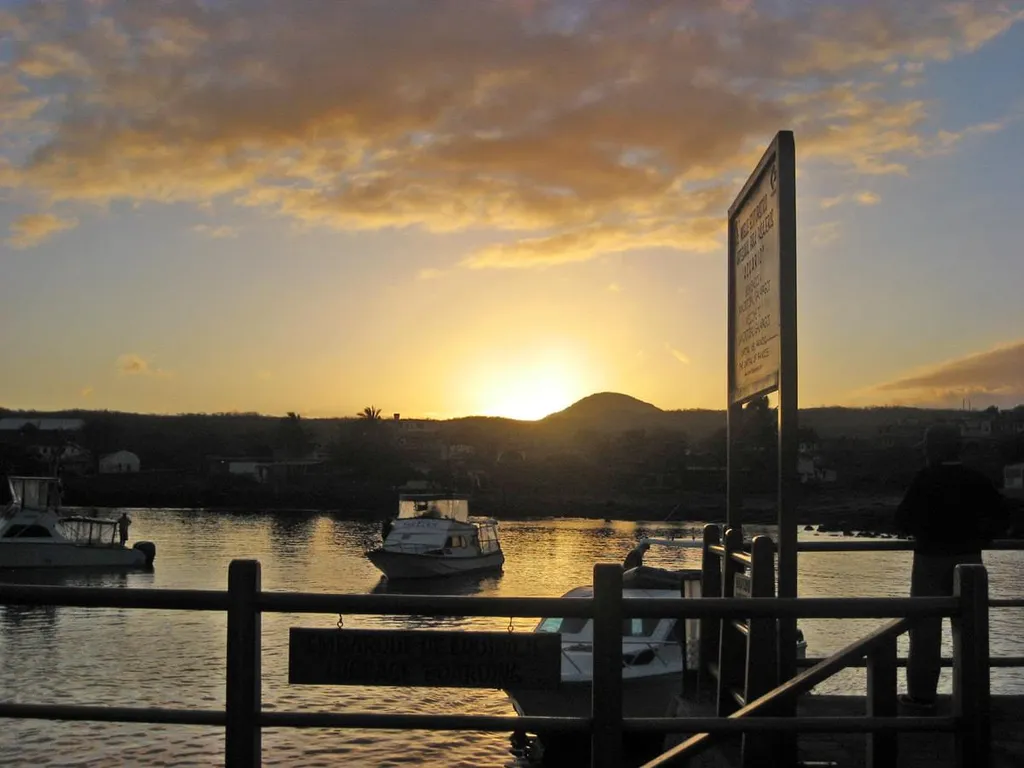
Prompt: Write a detailed travelog to Galapagos
The Galapagos Islands are a place like no other. Situated 620 miles off the coast of Ecuador, these volcanic islands are home to an incredible array of wildlife, many of which are found nowhere else on earth. As a wildlife enthusiast, I had dreamed of visiting the Galapagos for years, and so when the opportunity arose, I knew I had to seize it.
The history of the Galapagos is as fascinating as its wildlife. The islands were discovered in 1535 by the Spanish explorer Tomas de Berlanga, who stumbled upon them by accident while en route to Peru. For centuries, the islands remained relatively isolated, serving as a waypoint for whalers and pirates but largely untouched by human civilization.
It wasn't until the 19th century that the Galapagos began to attract scientific attention. In 1835, the British naturalist Charles Darwin visited the islands aboard the HMS Beagle, observing the unique flora and fauna and formulating his groundbreaking theory of evolution by natural selection. Today, the Galapagos are considered one of the world's premier destinations for ecological and wildlife tourism, with over 200,000 visitors each year.
As my plane touched down on the island of Baltra, I felt a sense of excitement and anticipation building within me. I had arranged to take a week-long cruise around the islands, and I couldn't wait to start exploring. My first stop was Santa Cruz, the second-largest island in the archipelago and a hub of activity for tourists.
Santa Cruz is home to the Charles Darwin Research Station, a scientific facility dedicated to the study and conservation of the Galapagos' unique ecosystem. The station is open to visitors, and I spent several hours exploring its exhibits and learning about the ongoing research projects. One of the highlights of my visit was seeing the famous Galapagos tortoises, which can live for over 100 years and weigh up to 600 pounds.
After leaving Santa Cruz, my cruise took me to several other islands, each with its own unique wildlife and landscapes. One of the most memorable was Genovesa, a small island in the northeast of the archipelago known for its birdlife. Here, I saw frigatebirds, blue-footed boobies, and red-footed boobies, all in their natural habitats. The landscape was stark and otherworldly, with towering cliffs and jagged lava formations.
Another highlight of my trip was a visit to Floreana, a small island with a fascinating human history. In the 19th century, the island was home to a small group of settlers, who struggled to eke out a living on the harsh terrain. Today, the island is home to several historic sites, including the Post Office Bay, where whalers used to leave letters for loved ones to be picked up by passing ships. Visitors can still leave letters in the box, which is now maintained by the Ecuadorian post office.
Throughout my journey, I was struck by the Galapagos' commitment to conservation and sustainable tourism. The islands are heavily regulated, with strict limits on the number of visitors and the types of activities that are permitted. This has helped to preserve the fragile ecosystem and protect the wildlife from human disturbance.
As I made my way back to Baltra at the end of my trip, I couldn't help but feel a sense of awe and gratitude for the incredible experience I had had in the Galapagos. From the towering tortoises to the playful sea lions to the stunning landscapes, every aspect of the islands was unforgettable. But perhaps most importantly, the Galapagos had reminded me of the incredible diversity of life on earth and the importance of protecting it for future generations.
In conclusion, the Galapagos Islands are a must-see destination for any wildlife lover or ecological enthusiast. The islands offer a unique window into the natural world, with opportunities to see rare and endemic species up close and to learn about the complex relationships that exist within ecosystems. But beyond its ecological wonders, the Galapagos also has a rich human history and culture, with traditions that date back centuries.
Today, the Galapagos faces many challenges, from overfishing to invasive species to climate change. But through the efforts of dedicated scientists, conservationists, and local communities, the islands are working to protect their unique heritage for generations to come. As a visitor, it is important to be mindful of the impact that we have on the fragile ecosystem and to support initiatives that promote sustainability and responsible tourism.
As I boarded my plane back to the mainland, I knew that the Galapagos had left a lasting impression on me. The islands had opened my eyes to the wonders of the natural world and the importance of preserving it for future generations. And who knows, perhaps one day I will return to this magical place, to explore new islands, discover new species, and experience once again the incredible beauty and diversity of the Galapagos.

